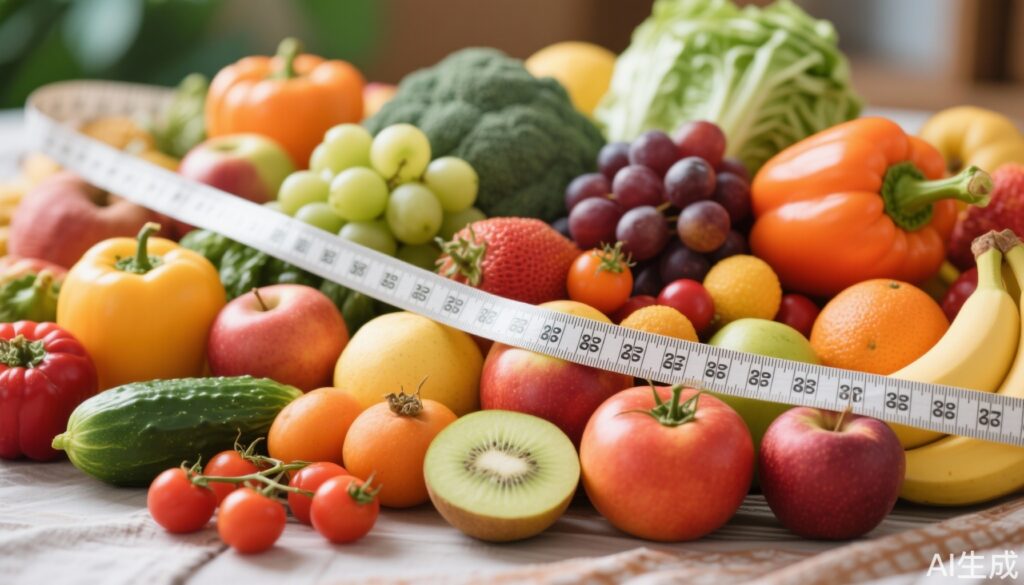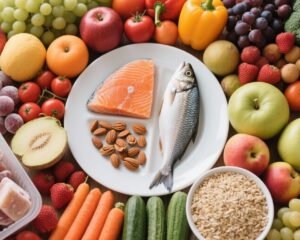Introduction
The phrase “eat five portions of fruits and vegetables a day” is one of the most well-known public health messages worldwide. Promoted as a simple way to improve nutrition and reduce chronic disease risk, it has been embedded in dietary guidelines for more than two decades. Yet, despite its advocacy, many adults around the world fall short of this target. Recent research and expert opinions suggest it may be time to rethink this benchmark. Evidence is accumulating that consuming more than five portions daily—sometimes up to eleven—could markedly enhance health outcomes and longevity. This article explores the science behind the fruit and vegetable intake recommendations, recent findings on optimal consumption levels, practical ways to boost intake, and expert insights on how to make this shift in dietary habits.
What the Data Tell Us: Scientific and Clinical Evidence
The “five a day” campaign originated in the United Kingdom over 20 years ago. It was designed as a middle ground between scientific evidence for benefits and public accessibility. Experts chose five portions because it was easy to remember and achievable, minimizing psychological barriers to increasing fruit and vegetable consumption.
However, large-scale research now suggests that five daily servings may be just the starting point—not the upper limit—for optimal health benefits. A comprehensive meta-analysis involving over two million participants revealed that eating five portions of fruits and vegetables per day significantly lowers the risk of cardiovascular diseases and certain cancers. More strikingly, the maximum risk reduction was observed at about ten portions daily. Another seminal study found that people consuming more than seven portions per day exhibited a 42% reduction in mortality compared with those eating less than one portion.
The types of chronic diseases most impacted by higher fruit and vegetable intake include heart disease, stroke, and various cancers, all leading causes of global morbidity and mortality. Phytochemicals, fiber, vitamins, and minerals in plant foods contribute to antioxidant, anti-inflammatory, and metabolic benefits.
Misconceptions Around the “Five a Day” Guideline
Despite widespread acceptance, there are some misconceptions about the “five a day” recommendation:
1. Five Portions Is an Upper Limit: Many people mistakenly believe that five portions are enough or even the maximum beneficial intake. In reality, research suggests “more is better.”
2. Fresh Fruits and Vegetables Only: There’s a belief that only fresh produce counts. However, frozen, canned, and dried fruits and vegetables retain most nutrients and are effective alternatives, often with better affordability and shelf life.
3. Difficulty in Reaching Higher Targets: Some feel that eight to eleven portions are impractical or require major lifestyle changes. Yet, incremental adjustments in meal planning and snacking patterns can help reach these levels seamlessly.
4. One-Size-Fits-All Recommendations: Not all portions or servings have equal nutritional value. Understanding portion sizes (about 80 grams per portion according to WHO) and diversity is important.
Practical Strategies to Increase Fruit and Vegetable Intake
Experts highlight that increasing intake beyond five portions is feasible with mindful planning:
– Breakfast: Add berries, sliced fruits, or spinach to oatmeal or smoothies.
– Lunch: Incorporate leafy greens, tomatoes, and cucumbers in sandwiches and salads.
– Dinner: Double vegetable portions in main dishes; experiment with steamed, roasted, or stir-fried vegetables.
– Snacks: Swap out processed snacks for fruit slices, vegetable sticks with hummus, or dried fruits.
Meals from different cuisines offer rich inspiration. For instance, traditional Japanese diets recommend around ten portions daily, while Mediterranean diets emphasize a broad array of fresh produce, olive oil, nuts, and legumes, associated with reduced cardiovascular risks.
The WHO defines a serving as approximately 80 grams, equivalent to a medium apple or three tablespoons of cooked peas. Keeping this standard helps track intake practically.
Expert Recommendations and Insights
Celebrity chef Jamie Oliver recently sparked debate by calling the “five a day” advice a “lie.” He advocates for aiming at seven to eight portions, or even up to eleven, to truly reap the health benefits. Oliver’s perspective reflects a growing consensus in the medical and nutritional community.
Health experts emphasize that the “five a day” message should be viewed as a baseline rather than a ceiling. As international experiences show—from Japan’s ten servings to Mediterranean dietary patterns—higher fruit and vegetable consumption correlates with lower incidence of heart disease, stroke, and longer life expectancy.
Furthermore, experts encourage flexibility in sources of fruits and vegetables, highlighting that frozen, canned, or dried options are acceptable and sometimes more accessible.
Patient Scenario: Applying the Evidence in Everyday Life
Consider Sarah, a 45-year-old office worker who struggles with fatigue and recently discovered high blood pressure during a routine check-up. Sarah eats about two servings of fruits and vegetables daily, mostly due to convenience and time constraints.
After discussing with her healthcare provider, Sarah gradually increases her intake by adding a cup of mixed berries to her yogurt in the morning, a large salad with her sandwich at lunch, and an extra serving of steamed broccoli and carrots with dinner. She replaces afternoon chips with fresh apple slices.
Over months, Sarah not only lowers her blood pressure but also reports improved energy. Her story exemplifies how achievable these lifestyle adjustments are and how impactful increased fruit and vegetable consumption can be.
Conclusion
The established “five a day” fruit and vegetable guideline, while influential and helpful, may no longer fully reflect the current scientific understanding of optimal nutrition for chronic disease prevention and lifespan extension. There is compelling evidence that increasing intake to seven, eight, or even ten or more portions daily offers significantly greater health benefits.
Practical strategies and diverse food options make these higher targets attainable for most people. As public health messages evolve, embracing these new targets could improve global health outcomes and reduce the burden of chronic diseases. Nutrition experts and clinicians alike should encourage patients and the public to view “five a day” as the starting point for a more vibrant, disease-resilient life.
References
1. Aune D, Giovannucci E, Boffetta P, et al. Fruit and vegetable intake and the risk of cardiovascular disease, total cancer and all-cause mortality—a systematic review and dose-response meta-analysis of prospective studies. Int J Epidemiol. 2017;46(3):1029–1056.
2. Boeing H, Bechthold A, Bub A, et al. Critical review: vegetables and fruit in the prevention of chronic diseases. Eur J Nutr. 2012;51(6):637–663.
3. World Health Organization. Healthy diet. WHO Fact Sheets. Updated 2020.
4. Satija A, Hu FB. Plant-based diets and cardiovascular health. Trends Cardiovasc Med. 2018;28(7):437–441.
5. Jamie Oliver’s comments on fruit and vegetable intake, BBC News interview, 2024.
6. CDC: Fruit and Vegetable Consumption Facts. Centers for Disease Control and Prevention. Updated 2023.
7. Mediterranean diet and health outcomes: Sofi F, et al. Mediterranean diet and health status: an updated meta-analysis and a proposal for a literature-based adherence score. Public Health Nutr. 2014;17(12):2769–2782.



